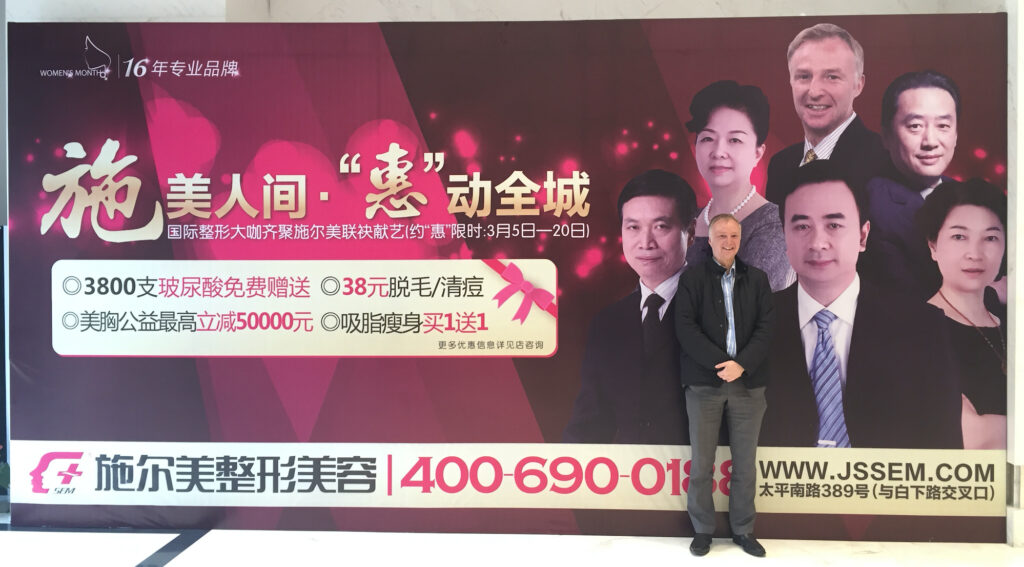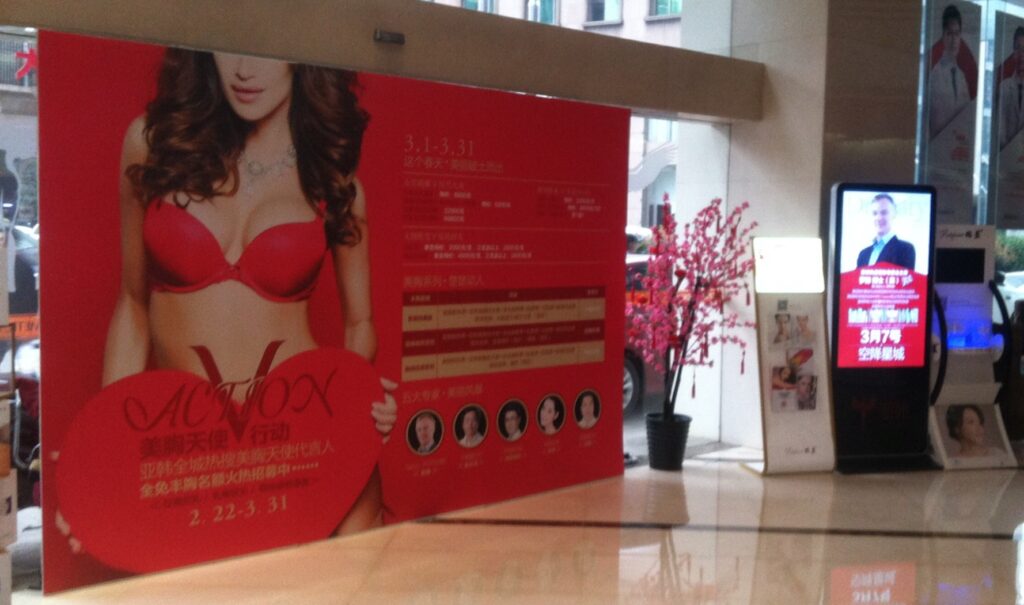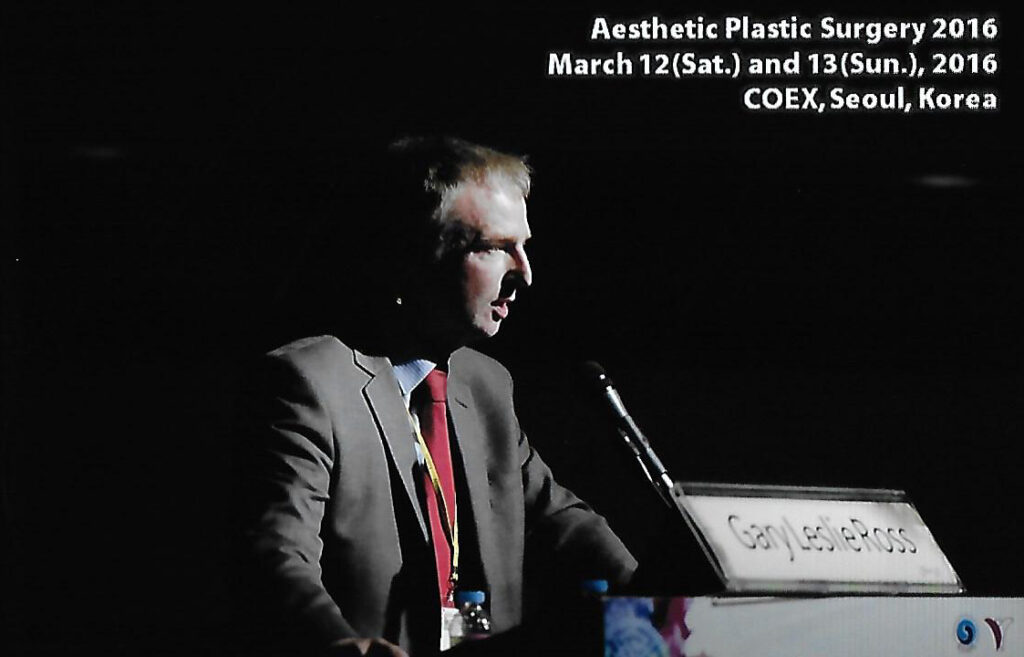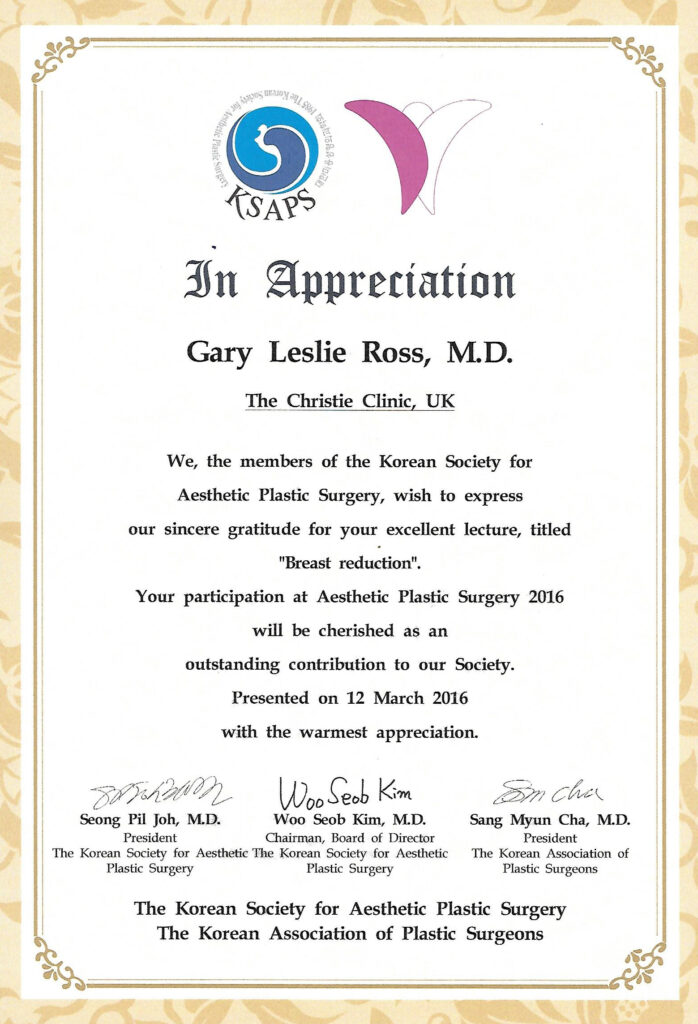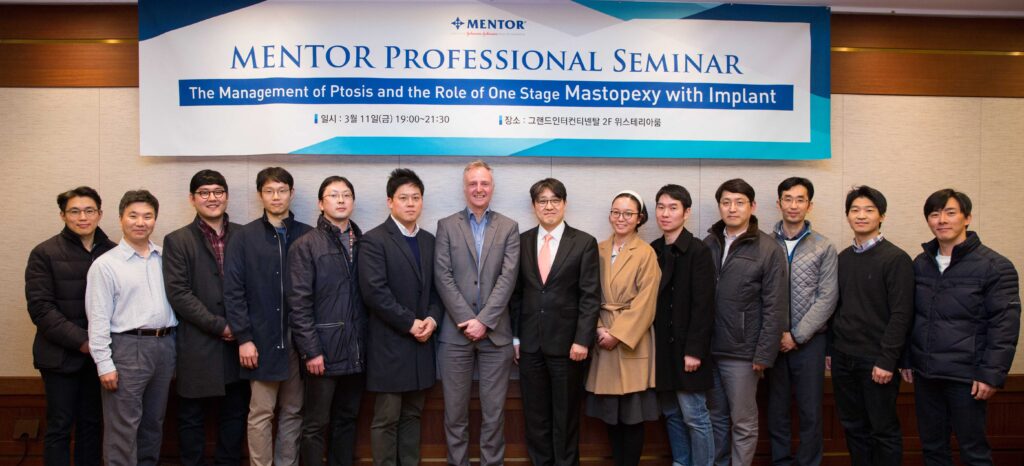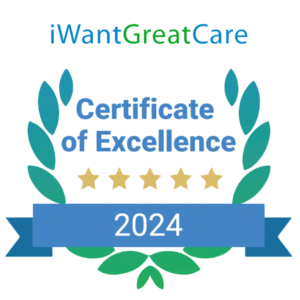On the 6th July 2016 the French Regulator: ANSM issued a press release regarding cases of Anaplastic Large Cell Lymphoma that have been identified in France in women with breast implants1. Concerns have subsequently been widely reported in the media.
Mr Ross would like to reassure patients that breast implant related Anaplastic Large Cell Lymphoma (Bi – ALCL) remains a rare condition that has been identified in 250 patients worldwide, with to date 8 deaths reported. According to BAAPS it appears that there are at least 13 cases identified in the UK. It is estimated that 100 million women have had breast implant insertion worldwide. (Current estimated incidence 1:400,000 and mortality of 1:12,500,000.)
What is ALCL?
ALCL (anaplastic large cell lymphoma) is a rare type of non-Hodgkin lymphoma that was first reported in 19972. ALCL is diagnosed in approximately 1 in 500,000 women in the US annually, while ALCL involving the breast is even more rare (affecting ~3 in 100 million US women annually).3 ALCL is characterized by abnormal growth of large T-cells3 .These cells can appear in the skin, soft tissues, lymph nodes, bones, soft tissues, lungs, or liver, whereas cutaneous ALCL, limited to the skin, typically has a favorable prognosis.4-6
What are the clinical features of ALCL in women with breast implants?
ALCL in women with breast implants generally presents as a late seroma (ie, developing at least 12 months after the most recent surgery)5-9 or palpable mass. Lymphoma cells are found in the seroma fluid or in the fibrous capsule rather than in the breast tissue.3 Like cutaneous ALCL, ALCL in women with breast implants generally has a favorable clinical course.5,11 In most cases, women presenting with seroma with or without severe capsular contracture have had positive outcomes after surgical removal of the implant.5,11 Some evidence, however, suggests that ALCL patients presenting with a mass have an increased risk of relapse or refractory disease.5 Complete surgical excision of lymphoma, implants, and the surrounding fibrous capsule is the optimal approach for the management of patients with BI-ALCL11.
How are ALCL cases in women with breast implants monitored?
In the US, the FDA tracks reports of ALCL in breast implant patients through the Manufacturer and User Facility Device Experience (MAUDE) database. This publicly-available system includes voluntary reports of adverse events from healthcare professionals and consumers (since 1993) and mandatory reports from manufacturers (since 1996), importers (since 1993) and user facilities (since 1991).10 ALCL cases occurring within the UK should be reported to the MHRA12.The relationship between implants and Bi-ALCL is also being investigated in France and Australia1, 13. The French medicines regulatory agency, which has given manufacturers until July 2017 to prove their products are safe or face having them banned.
How is it diagnosed?
Because the surgical findings associated with ALCL are extremely variable, clinical experts recommend that fresh seroma fluid and representative portions of the capsule be examined pathologically when ALCL is suspected.3,10
It is Mr Ross’s routine practice to send pathological specimens of the capsule for analysis in all cases of implant removal or implant based revisionary surgery. For patients with late onset seroma fluid is always sent for analysis and a total capsulectomy is recommended. This provides valuable reassurance to patients and all patients treated by Mr Ross for late onset seromas +/- mass have all been treated with total capsulectomy.
Is ALCL linked to a certain type of implant?
While tracking an ALCL case may be straightforward in women who have had only one breast implant, interpreting the case history becomes more difficult when patients have had multiple implants. One of the difficulties in determining causation is that many of those patients who have presented with breast implant related ALCL have had many different forms of implants at various time frames.
Although both smooth and textured devices have been reported10,14 it is believed that ALCL may be more common in textured implants and specifically in aggressively textured implants15. There is evidence emerging that subclinical infection may a contributing cause15.
When looking at the numbers of cases of ALCL it is important to compare this number against the worldwide numbers of implants per company and this requires prospective accurate data collection through an implant registry.
In Mr Ross’s practice all patients will receive the details of their implants and the implant details are recorded on the hospital registry. The UK is currently developing a breast and cosmetic implant registry that will allow identification of possible trends and complications relating to specific implants16.
Mr Ross’s philosophy regarding Bi-ALCL
Although Bi-ALCL is extremely rare it is important that patients understand that there is a risk currently being investigated worldwide. As part of the consent process all patients must be aware of the risk of Bi-ALCL17. Although Mr Ross has implanted thousands of breast implants he is not aware of any cases of ALCL in his practice. For all breast implant removal cases and implant revision cases Mr Ross always sends a sample of the capsule for pathological analysis. In the case of late onset seroma fluid is always sent for analysis patients and in this scenario patients undergoing implant removal / replacement have all been treated with total capsulectomy.
References
1. 14. Agence Nationale de Sécurité du Médicament et des Produits de Santé. https://ansm.sante.fr/S-informer/Actualite/Lymphome-Anaplasique-a-Grandes-Cellules-associe-aux-implants-mammaires-LAGC-AIM-Point-sur-les-investigations-en-cours-Point-d-Information Accessed July 11th 20162. Keech JA Jr, Creech BJ. Anaplastic T-cell lymphoma in proximity to a saline-filled breast implant. Plast Reconstr Surg. 1997;100:554–555.
3. US Food and Drug Administration. Anaplastic large cell lymphoma (ALCL) in women with breast implants: preliminary FDA findings and analyses. January 2011. Available at
https://www.fda.gov/MedicalDevices/ProductsandMedicalProcedures/ImplantsandProsthetics/BreastImplants/ucm239996.htm. Accessed July 11th 2016
4. Stein H, Foss HD, Dürkop H, et al. CD30+ anaplastic large cell lymphoma: a review of its histopathologic, genetic, and clinical features. Blood. 2000;96:3681–3695.
5. Thompson PA, Prince HM. Breast implant-associated anaplastic large cell lymphoma: a systemic review of the literature and mini-meta analysis. Curr Hematol Malig Rep. 2013;8:196–210.
6. Ferreri AJM, Govi S, Pileri SA, Savage KJ. Anaplastic large cell lymphoma, ALK-negative. Crit Rev Oncol Hematol. 2013;85:206–215.
7. Spear SL, Rottman SJ, Glicksman C, Brown M, Al-Attar A. Late seromas after breast implants: theory and practice. Plast Reconstr Surg. 2012;130:423–435.
8. Brody GS. Brief recommendations for dealing with a new case of anaplastic large T-cell lymphoma. Plast Reconstr Surg. 2012;129:871e–872e.
9.Taylor CR, Siddiq IN, Brody GS. Anaplastic large cell lymphoma occurring in association with breast implants: review of pathologic and immunohistochemical features in 103 cases. Appl Immunohistochem Mol Morphol. 2013;21:13–20.
10. US Food and Drug Administration. MAUDE – Manufacturer and user facility device experience. https://www.fda.gov/MedicalDevices/ProductsandMedicalProcedures/ImplantsandProsthetics/BreastImplants/ucm481899.htm Accessed July 11th 2016
11. Clemens MW, Medeiros LJ, Butler CE et al. Complete Surgical Excision Is Essential for the Management of Patients With Breast Implant-Associated Anaplastic Large-Cell Lymphoma. J Clin Oncol. 2016 Jan 10;34(2):160-8.
12. Medicines and Healthcare Products Regulatory Agency. Medical device alert. Available at https://www.gov.uk/drug-device-alerts/medical-device-alert-breast-implants-report-cases-of-anaplastic-large-cell-lymphoma-alcl Accessed July 11th 2016
13. Australian Government. Department of Health Therapeutic Goods Administration. https://www.tga.gov.au/committee-meeting-info/acsmd-meeting-statement-meeting-9-9-april-2015 Accessed July 11th 2016
14. Adams WP Jr. Discussion: Bacterial Biofilm Infection Detected in Breast Implant-Associated Anaplastic Large-Cell Lymphoma. Plast Reconstr Surg. 2016 Jun;137(6):1670-2.
15. Hu H, Johani K, Almatroudi A, Vickery K, Van Natta B, Kadin ME, Brody G, Clemens M, Cheah CY, Lade S, Joshi PA, Prince HM, Deva AK. Bacterial Biofilm Infection Detected in Breast Implant-Associated Anaplastic Large-Cell Lymphoma. Plast Reconstr Surg. 2016 Jun;137(6):1659-69.
16. Health and Social Care Information Centre https://www.hscic.gov.uk/bcir Accessed July 11th 2016
17. Clemens MW1, Miranda RN, Butler CE. Breast Implant Informed Consent Should Include the Risk of Anaplastic Large Cell Lymphoma. Plast Reconstr Surg. 2016 Apr;137(4):1117-22.

